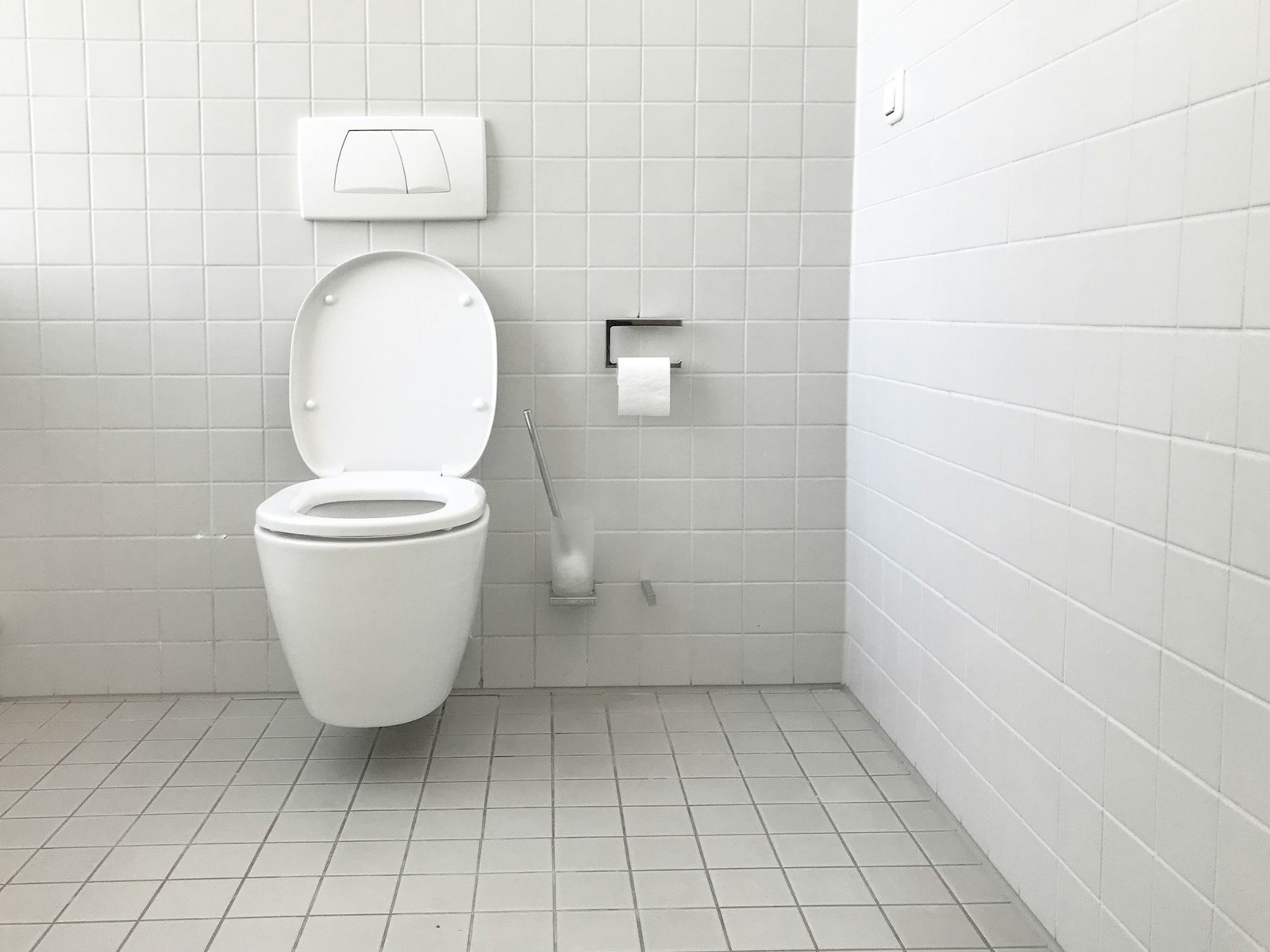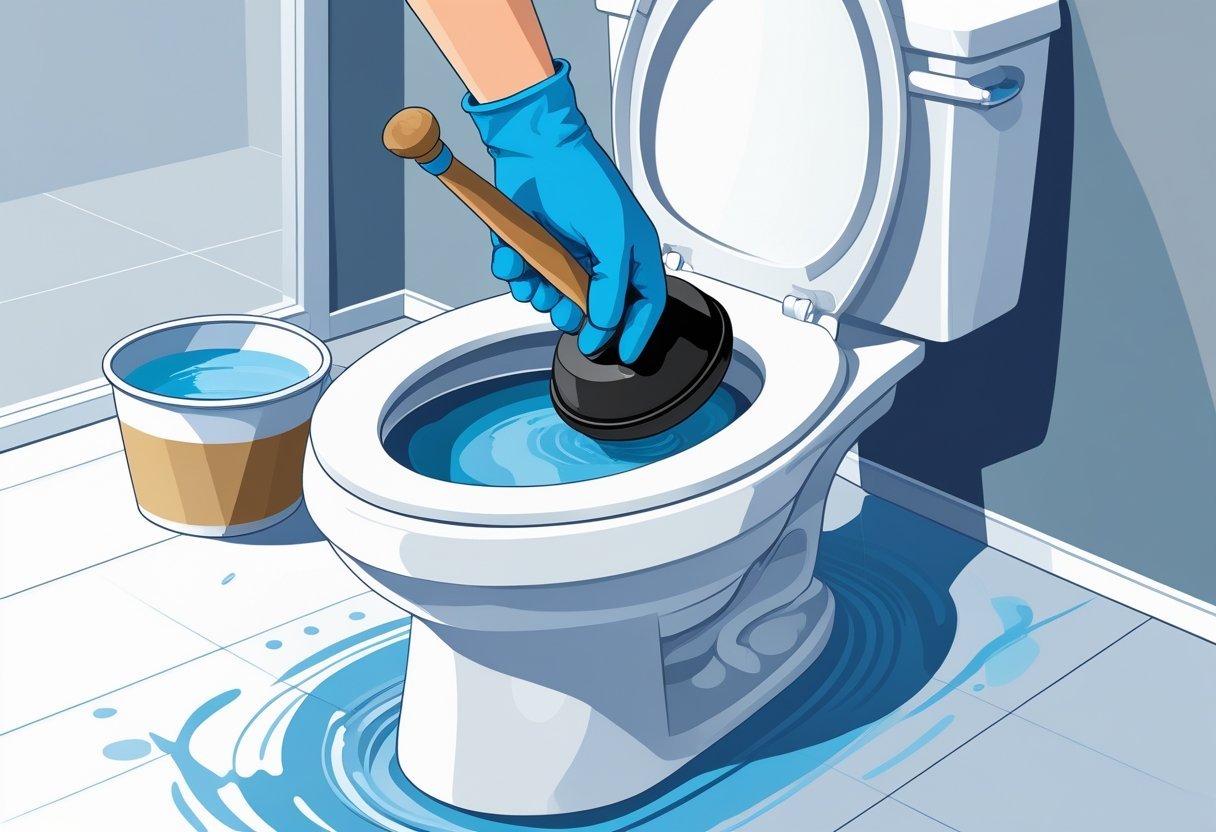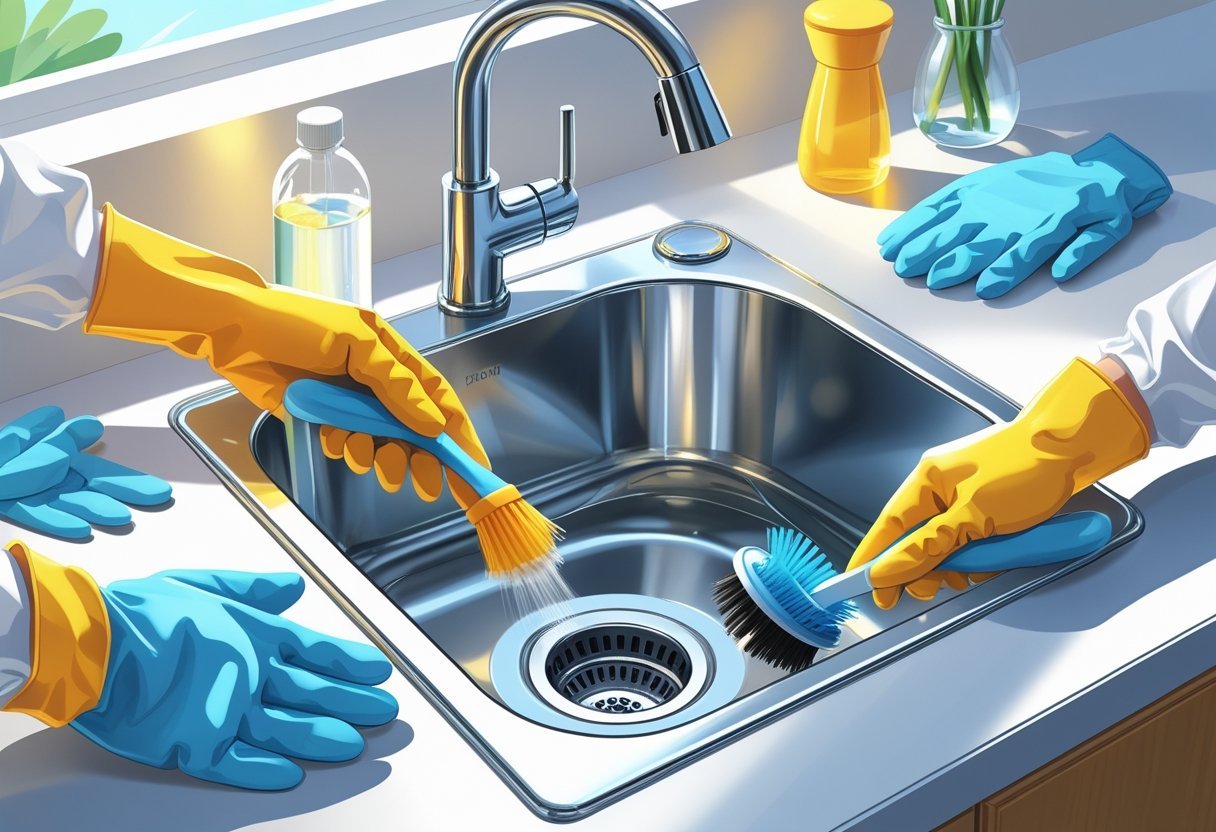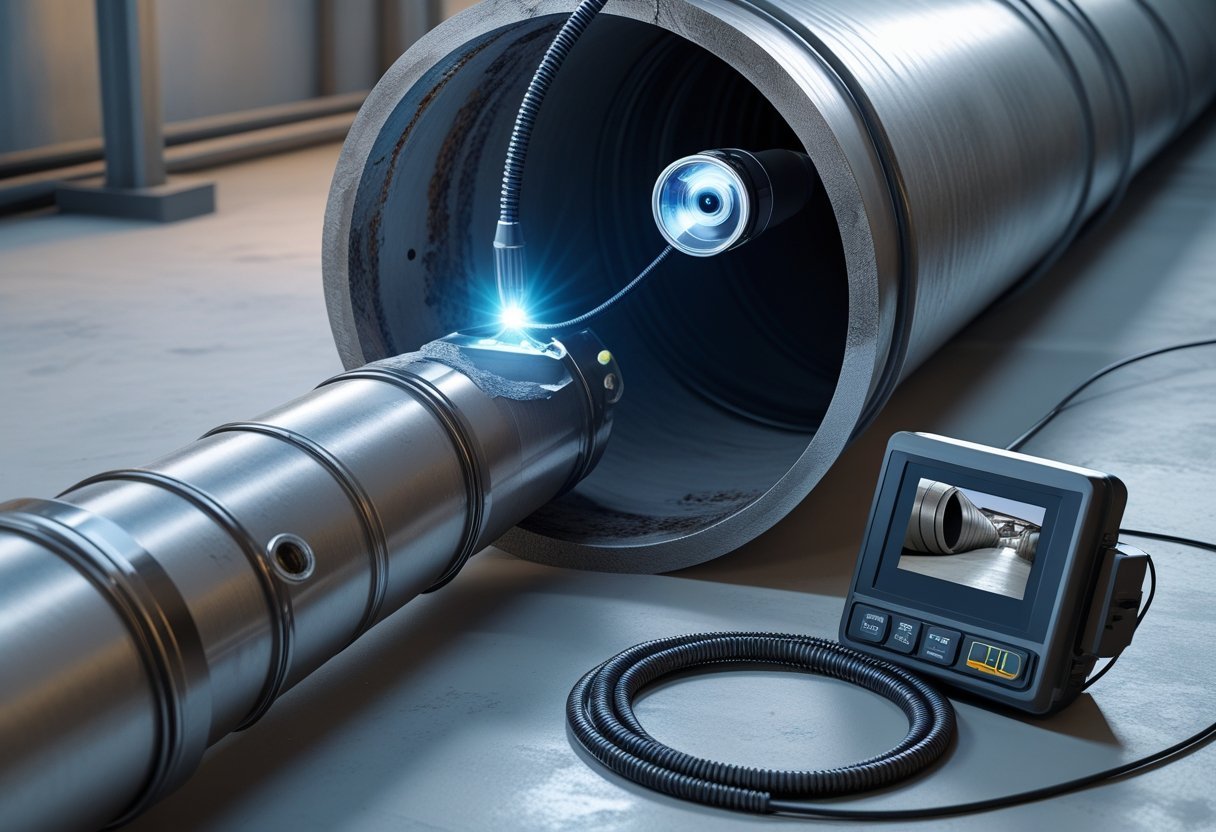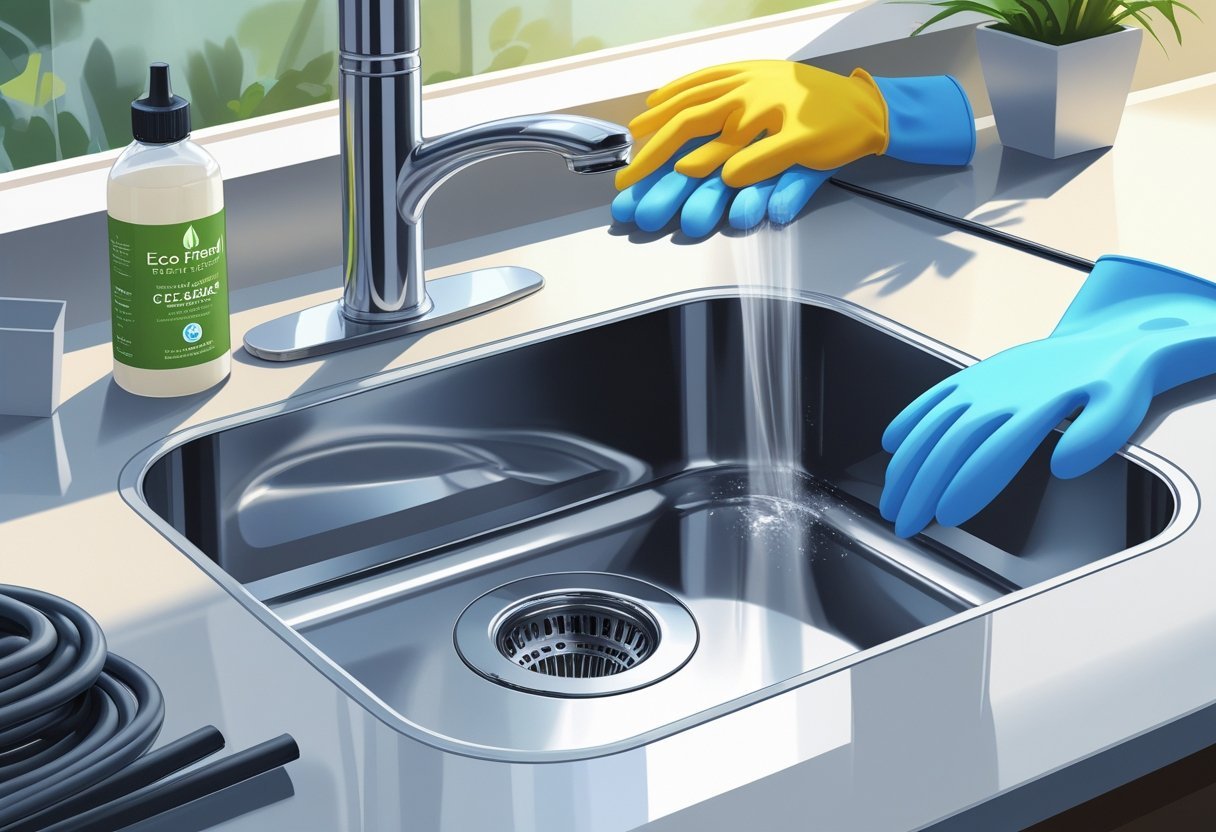Cleaning drains with baking soda and vinegar is a simple and effective solution for tackling clogs and bad odors. This natural method not only helps in breaking down grime and buildup in your pipes but also reduces the need for harsh chemicals. By using these common household ingredients, you can maintain your plumbing system without compromising your health or the environment.
Many homeowners in North Shore, Massachusetts, have found success with this approach. If you’re dealing with a stubborn drain, Large View Plumbing & Heating can provide expert advice on how to maximize the benefits of this method. With just a few steps, you can restore the flow in your sink while ensuring the longevity of your plumbing.
Implementing this technique regularly can also help prevent future clogs. Regular maintenance using baking soda and vinegar is an excellent way to keep your plumbing in good condition. Trust Large View Plumbing & Heating for all your plumbing needs to ensure a clean and efficient drainage system in your home.
How Baking Soda and Vinegar Clean Drains
Baking soda and vinegar create a powerful cleaning solution for drains through a chemical reaction that effectively removes clogs and neutralizes odors. Understanding this process, along with its safety for pipes and suitability for different types of drains, can help you make informed decisions about your plumbing maintenance.
The Science Behind the Chemical Reaction
When you combine baking soda (sodium bicarbonate) with vinegar (acetic acid), a chemical reaction occurs that produces carbon dioxide gas. This fizzing action helps to dislodge debris and debris blocking your drains.
- Step One: Pour ½ cup of baking soda down the drain.
- Step Two: Add ½ cup of vinegar. You should see bubbling and fizzing.
- Step Three: After a few minutes, follow with boiling water for effective cleaning.
This reaction is not only effective but also releases energy that can help break down organic material, making it a useful method for unclogging drains.
Why This Method Is Safe for Pipes
Using baking soda and vinegar is considered safe for most plumbing systems. Unlike harsh chemical cleaners that can corrode pipes over time, this natural method is gentle.
- Non-corrosive: The ingredients are non-toxic and won’t damage pipes.
- Eco-friendly: No harmful chemicals are released into the environment.
- Effective maintenance: Routine use can keep your drains smelling fresh and functioning well.
If you’re concerned about your plumbing’s integrity, this method offers a balanced and reliable solution for maintenance without the risks associated with stronger chemical alternatives.
Suitable Types of Drains for Cleaning
This cleaning technique is effective on various types of drains, including:
- Kitchen sinks: Great for grease buildup.
- Bathroom sinks and tubs: Helps with hair and soap residue.
- Garbage disposals: You can use a half measure of both ingredients to deodorize.
Feel free to tackle clogs in these areas using this method. For more complex issues, consult a professional like Large View Plumbing & Heating to ensure your plumbing remains healthy and efficient.
Step-by-Step Guide to Cleaning Drains with Baking Soda and Vinegar
Cleaning your drains with baking soda and vinegar can be an effective and eco-friendly solution to unclog a drain. Understanding the process is crucial for successful results and maintaining your plumbing. This guide will help you navigate each step clearly.
Preparation and Safety Tips
Before starting, gather all necessary materials: baking soda, white vinegar, a measuring cup, a pot of boiling water, and a sink stopper.
Safety tips:
- Ensure proper ventilation in your area.
- Wear gloves to protect your hands from any residue.
- Avoid using this method if you have previously attempted chemical drain cleaners, as harmful reactions may occur.
Clearing the area around the drain is also advisable. For best results, remove any standing water to allow the mixture to target the clog directly. Ensuring your workspace is clean will enhance safety and effectiveness.
Mixing and Applying the Solution
To clean a drain with baking soda and vinegar, the right measurements are crucial. Start by pouring one cup of baking soda down the drain. Try to get as much of it into the pipe as possible.
Next, follow the baking soda with one cup of white vinegar. This combo creates a fizzing reaction that can break down debris.
Immediately cover the drain with a stopper or cloth to keep the reaction focused. Allow it to sit for about 30 minutes; during this time, the fizzing will work to dissolve the clog and remove any built-up residue.
Using Hot or Boiling Water for Maximum Effectiveness
After waiting, it’s time to use hot or boiling water. This step enhances the effectiveness of the baking soda and vinegar combination.
Boil a pot of water and carefully pour it down the drain in a steady stream. Hot water can help flush out any remaining debris that the baking soda and vinegar may have loosened.
This method not only clears the clog but also helps sanitize your pipes, preventing future buildup. For troublesome clogs, consider repeating the process once more.
Troubleshooting Common Issues
If your drain remains clogged after the initial attempt, don’t worry. First, revisit the measurement; sometimes, an extra half cup of baking soda may be needed for stubborn clogs.
Alternatively, the issue may require more time for the solution to work. Let the mixture sit longer—up to an hour or more.
In cases where the clog persists, consider consulting a professional like Large View Plumbing & Heating. Their expertise can provide tailored solutions for complex plumbing issues. With over ten years of experience, they can help ensure your drains stay clear and functional.
Alternative Homemade Drain Cleaning Methods
There are several effective homemade methods for cleaning drains that utilize common household ingredients. These alternatives can help you resolve minor clogs and maintain your plumbing system without harsh chemicals. Consider these methods that leverage the power of natural ingredients.
Baking Soda and Salt Mixture
Combining baking soda and salt is a simple yet effective way to tackle drain clogs. Start by pouring 1/2 cup of baking soda down the drain, followed by 1/2 cup of salt.
The baking soda acts as a natural abrasive, while the salt helps to break up grease and debris. Wait for about 30 minutes and then flush the drain with hot water. This method not only cleans but also helps to eliminate odors.
For persistent issues, you might want to repeat the process. This mixture can be particularly useful for routine maintenance and is safer for your plumbing than chemical solutions.
Using Grease-Fighting Dish Soap
Another effective homemade drain cleaner involves the use of grease-fighting dish soap. Begin by boiling a pot of water. While the water heats, squirt dish soap directly into the drain.
The soap helps to dissolve grease and oils that may be causing clogs. After adding the soap, slowly pour the boiling water down the drain. The heat from the water works in tandem with the soap to break up any buildup.
This method is especially useful for kitchen sinks where greasy residue is common. Using grease-fighting soap can help keep your pipes clear and functioning properly.
Adding Lemon Juice or Cream of Tartar
Both lemon juice and cream of tartar are excellent natural alternatives for cleaning drains. Start by mixing 1/2 cup of cream of tartar with 1/4 cup of lemon juice. This combination creates a natural acidic reaction that helps break down clogs and remove unpleasant odors.
Pour the mixture down the drain and let it sit for about 30 minutes. Afterward, flush the drain with hot water. This method not only cleans but also leaves a fresh scent in your pipes.
Regular use of this mixture can help maintain optimal flow in your drains. It’s a great option if you prefer a more citrusy aroma while cleaning your plumbing.
Implementing these homemade methods can enhance your drain maintenance routine. If you face regular clogs and need assistance, consider reaching out to Large View Plumbing & Heating for professional support.
Best Practices for Preventing Clogs and Maintaining Drains
Keeping your drains clear and functional requires a combination of routine maintenance and mindful usage. Implementing effective practices can significantly reduce the risk of clogs and the need for costly repairs.
Routine Cleaning Schedule
Establishing a regular cleaning schedule is a fundamental step in maintaining clear drains. Aim to clean your drains at least once a month using a natural solution. A mixture of ½ cup baking soda followed by ½ cup vinegar can dissolve buildup effectively. After letting it sit for about 30 minutes, flush the drain with boiling water.
In addition to homemade solutions, consider using store-bought enzyme drain cleaners that break down organic matter. Regular maintenance prevents clogs from forming, which saves both time and money in the long run.
Using Drain Strainers and Garbage Disposals
Installing drain strainers is a simple yet effective method to prevent clogs. These small devices catch hair, food particles, and other debris before they enter your plumbing system. Make it a habit to clean the strainers regularly to keep them functioning well.
For kitchens, using a garbage disposal can help manage food waste. However, it’s crucial to use it properly. Run water while using the disposal and avoid putting fibrous, starchy, or overly greasy foods into it. This practice minimizes the chances of clogs forming downstream.
Avoiding Grease and Oil in Drains
One of the most significant contributors to clogged drains is the disposal of grease and oil. These substances can solidify and create blockages in your pipes. To avoid issues, always dispose of cooking grease in a container and throw it in the trash.
If grease accidentally makes its way down the drain, follow up with hot water and a mix of baking soda and vinegar. Regularly flushing your drains with hot water can further prevent grease buildup.
For assistance in maintaining your plumbing system, you can contact Large View Plumbing & Heating. Their expertise in the North Shore community ensures your drains stay clear and functional with professional support.
Addressing Persistent or Severe Drain Clogs
Dealing with stubborn drain clogs can be frustrating. There are effective methods to resolve more severe blockages, from using a plunger to considering professional help when necessary.
When to Use a Plunger
A plunger is a simple yet effective tool for addressing clogged drains. It creates pressure that can dislodge minor to moderate blockages. Use a cup-style plunger for sinks and a flange plunger designed for toilets.
- Preparation: Clear the area around the drain. Ensure there’s enough water in the sink for the plunger to create a seal.
- Technique: Place the plunger over the drain and push down firmly. Pull up quickly, then repeat this motion several times.
- Check the Result: After a few strokes, test the drain. If water drains, the clog may be cleared.
If a plunger isn’t effective, you might need more robust solutions.
Considering Chemical Drain Cleaners
Chemical drain cleaners can be a quick fix for stubborn clogs. However, use them with caution due to potential damage to your pipes.
- Read Labels: Always follow the manufacturer’s instructions. Some cleaners react poorly with certain materials, particularly older pipes.
- Safe Usage: Wear gloves and goggles to protect your skin and eyes. Ensure proper ventilation in the area.
- Aftercare: After using a chemical cleaner, flush the drain with hot water to remove any residue.
For persistent issues, consult with professionals. Large View Plumbing & Heating can assess the situation and recommend the best course of action.
Hiring a Professional Drain Cleaning Service
Sometimes, the best solution for severe drain clogs is to seek help from a professional. Trained technicians can effectively identify and resolve deeper issues.
- Assessment: Professionals use cameras to inspect pipes, providing a clear view of the problem.
- Advanced Techniques: Services like hydro-jetting can clear stubborn blockages safely.
- Ongoing Maintenance: Regular professional cleaning can prevent future clogs and maintain optimal drain function.
Trust Large View Plumbing & Heating to handle your drain issues. With years of expertise, they ensure quality service for all your plumbing needs.
Special Considerations for Different Drains and Fixtures
When it comes to cleaning drains with baking soda and vinegar, different fixtures require tailored approaches. Factors such as the nature of clogs and specific materials play a crucial role in achieving effective results. Below are key considerations for various drains in your home.
Kitchen Sinks and Grease Buildup
Kitchen sinks often experience grease buildup from cooking oils and food residues. This can lead to slow drains and clogs that require attention.
Start by pouring 1/2 cup of baking soda followed by 1 cup of white vinegar down the drain. The fizzing reaction helps to break down grease.
For stubborn clogs, consider repeating this process a couple of times. Always flush with hot water afterward to clear any remaining debris. If issues persist, you may want to consult professionals like Large View Plumbing & Heating, who can provide expert guidance.
Bathroom Sinks, Tubs, and Showers
Bathroom fixtures are prone to clogs from soap scum and hair buildup. In shower drains, these materials can accumulate rapidly, leading to slow drainage.
To tackle clogs in these areas, use the same baking soda and vinegar method. Pour 1/2 cup of baking soda followed by 1/2 cup of vinegar, and cover the drain with a cloth to enhance the foaming action for about 30 minutes.
Afterward, flush with hot water. Regular maintenance can prevent significant clogs in your bathroom sinks, tubs, and showers.
Dealing with Hair Buildup and Soap Scum
Hair buildup is a common issue in bathroom drains, especially in showers and sinks. It combines with soap scum to create stubborn clogs.
To address this, you can use the baking soda and vinegar method. Alternatively, a drain snake can effectively remove hair clogs.
After removing buildup, following with boiling water can help dissolve soap scum. If you encounter recurring problems, seeking assistance from Large View Plumbing & Heating ensures a professional solution tailored to your plumbing system.
Managing Mineral Deposits and Leaks
Mineral deposits can also affect drains, causing blockages and leaks over time. These are commonly found in areas with hard water and can be detrimental to your plumbing.
For prevention, regularly treating the drains with baking soda and vinegar can help. In cases of leaks, it’s crucial to identify the source to prevent further damage.
If the problem is persistent, reaching out to professionals like Large View Plumbing & Heating can provide reliable solutions to manage deposits and repair leaks effectively.
Frequently Asked Questions
Baking soda and vinegar are popular choices for cleaning drains due to their effectiveness and safety. This section addresses common inquiries related to the usage, preparation, and potential risks of this cleaning method.
What is the correct ratio of baking soda to vinegar for cleaning a drain?
The common ratio for cleaning a drain is about 1:1. You typically use one cup of baking soda followed by one cup of vinegar. This combination creates a chemical reaction that helps to break down debris and clogs.
Can baking soda and vinegar be left in a drain overnight?
Yes, you can leave the mixture of baking soda and vinegar in the drain overnight. This extended time allows it to work on stubborn clogs and odors. Just ensure that you flush it with hot water the next morning for best results.
How long should baking soda and vinegar remain in a drain before rinsing?
It is recommended to let the baking soda and vinegar sit for at least 30 minutes before rinsing with hot water. This duration allows the mixture to penetrate and break down buildup more effectively, enhancing its cleaning power.
What are the dangers of using baking soda and vinegar for unclogging drains?
While baking soda and vinegar are generally safe, some precautions should be taken. Avoid using them in drains that have previously had chemical cleaners, as reactions could occur. Additionally, do not mix baking soda and vinegar with other substances, as this can create harmful gases.
Are there specific steps to follow when cleaning a shower drain with baking soda and vinegar?
To clean a shower drain, start by removing any visible debris. Then, pour about half a cup of baking soda followed by half a cup of vinegar. After the bubbling reaction settles, let it sit for 30 minutes and then flush with hot water.
Is using baking soda and vinegar a safe method for drain cleaning?
Yes, using baking soda and vinegar is a safe and effective method for cleaning drains. It avoids the harsh chemicals found in many commercial cleaners. If you require professional assistance, consider contacting Large View Plumbing & Heating for expert plumbing services.

